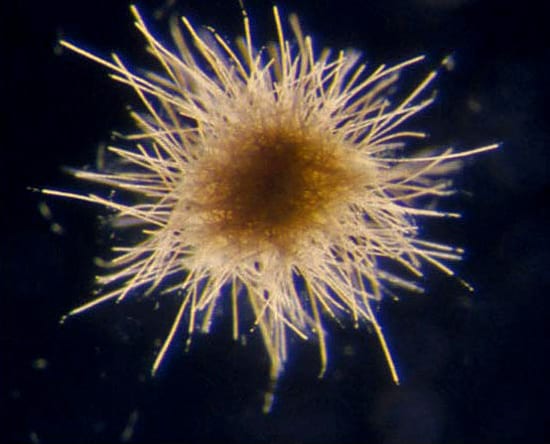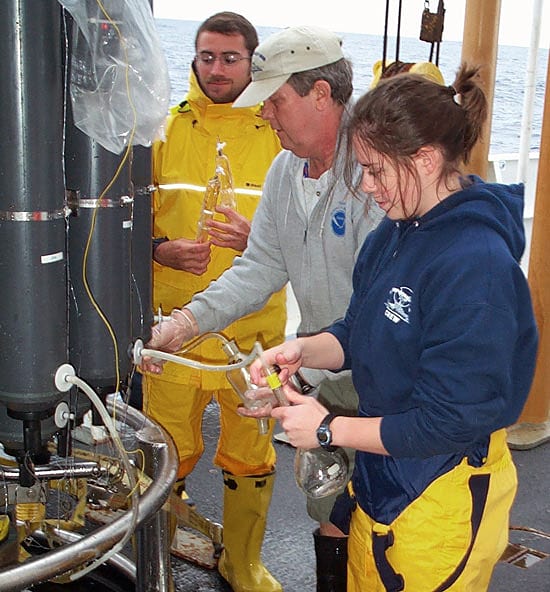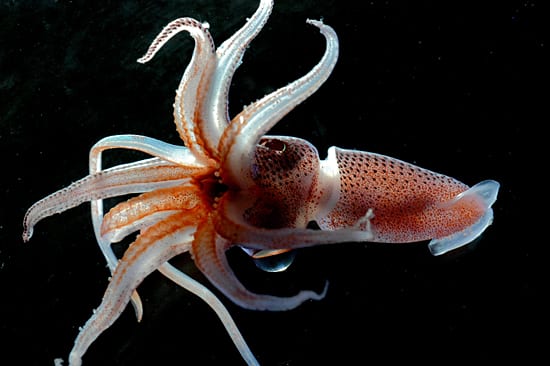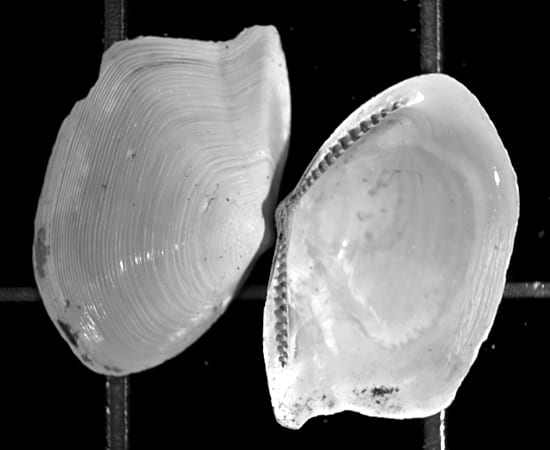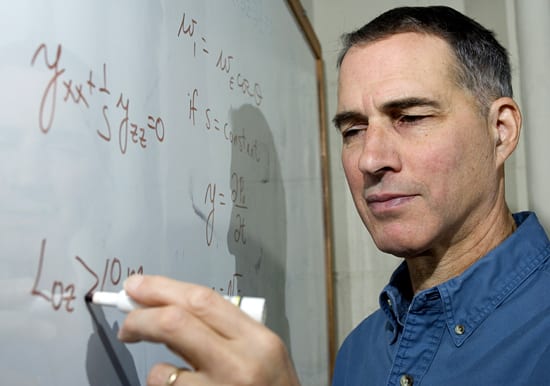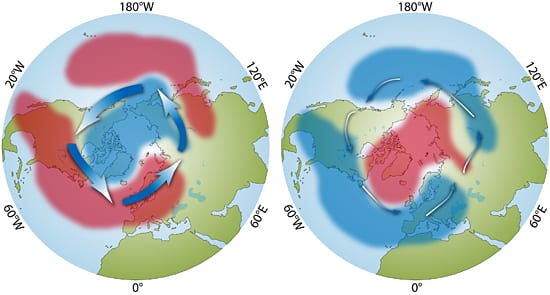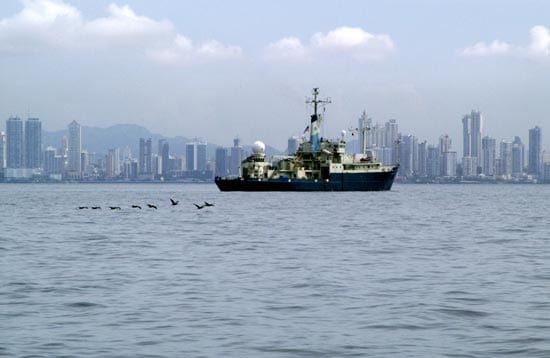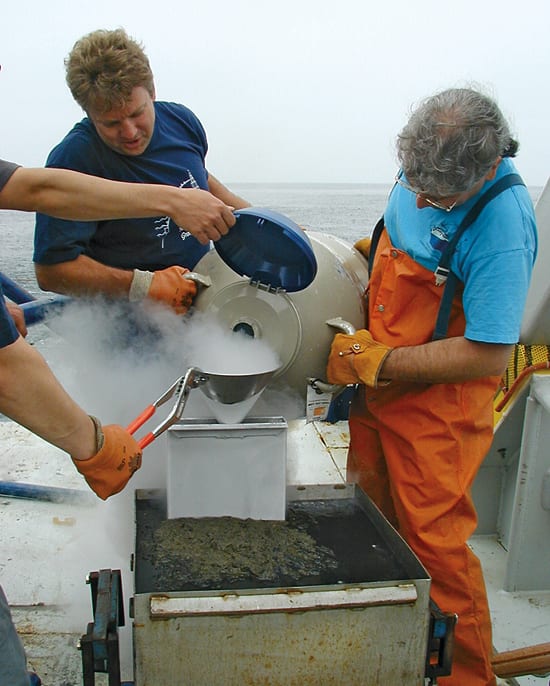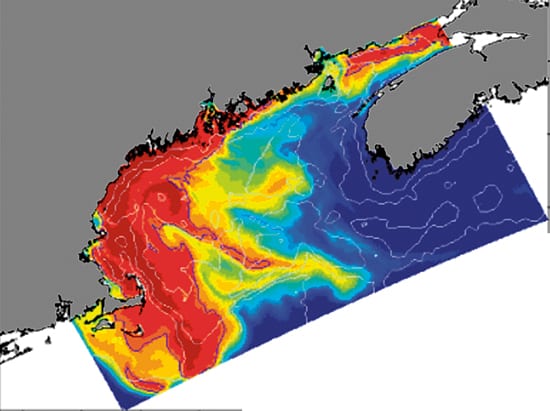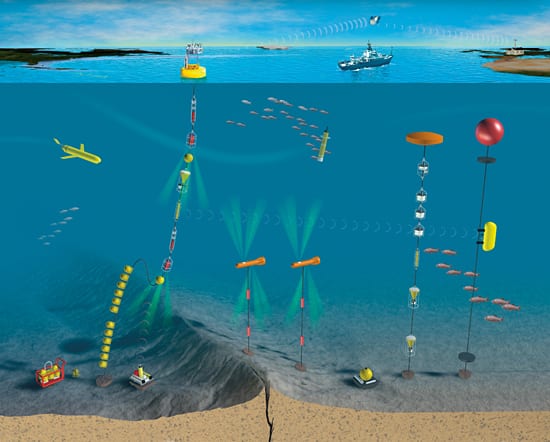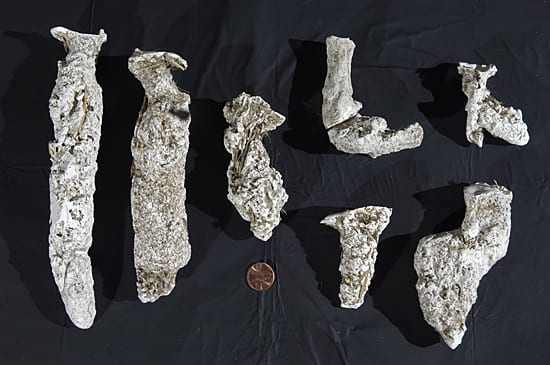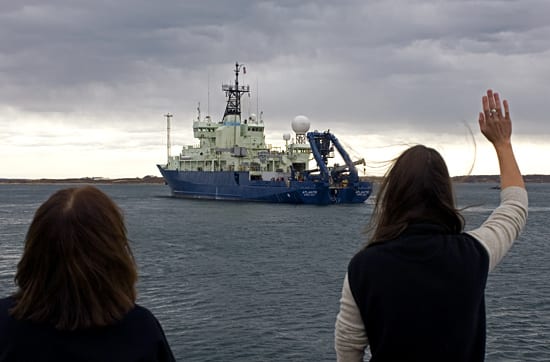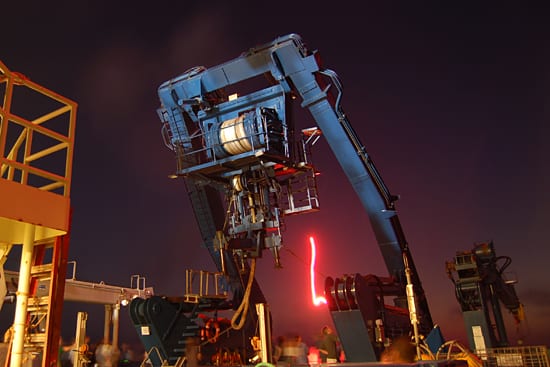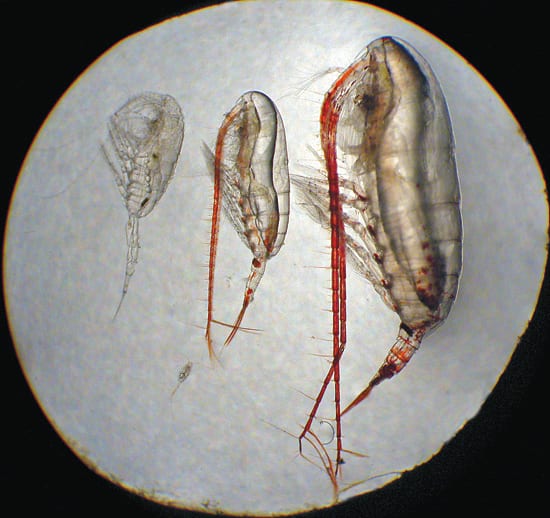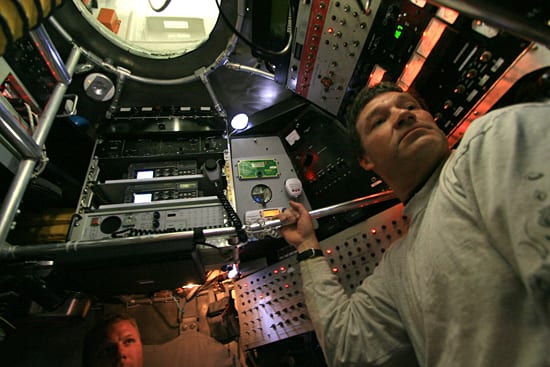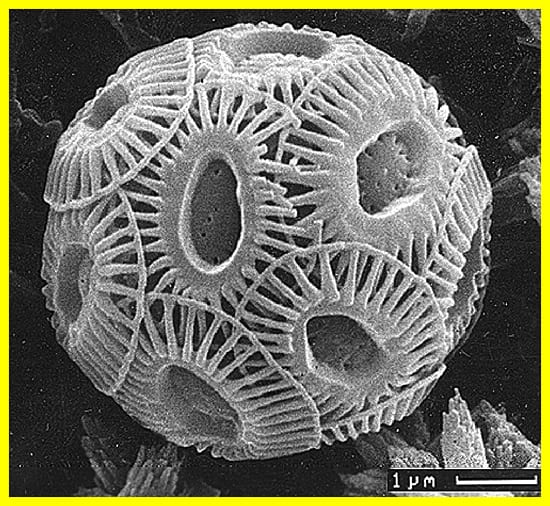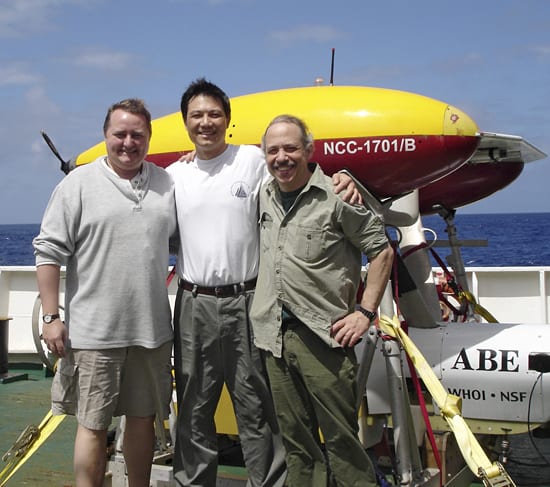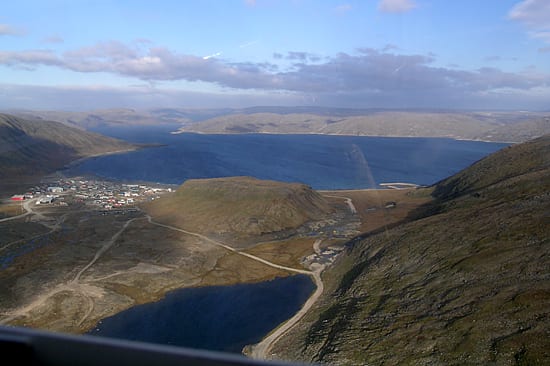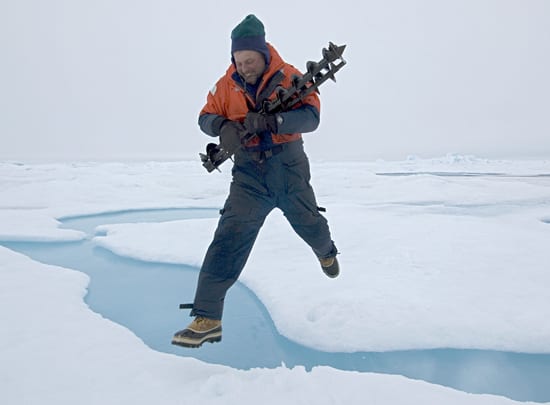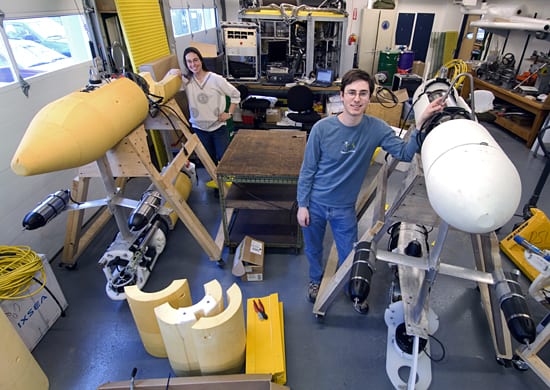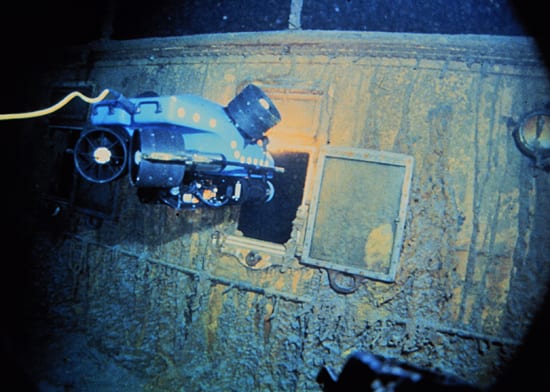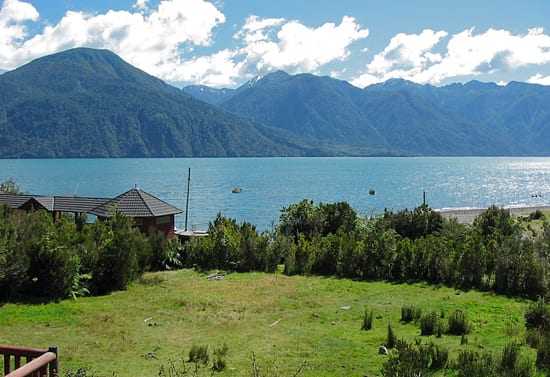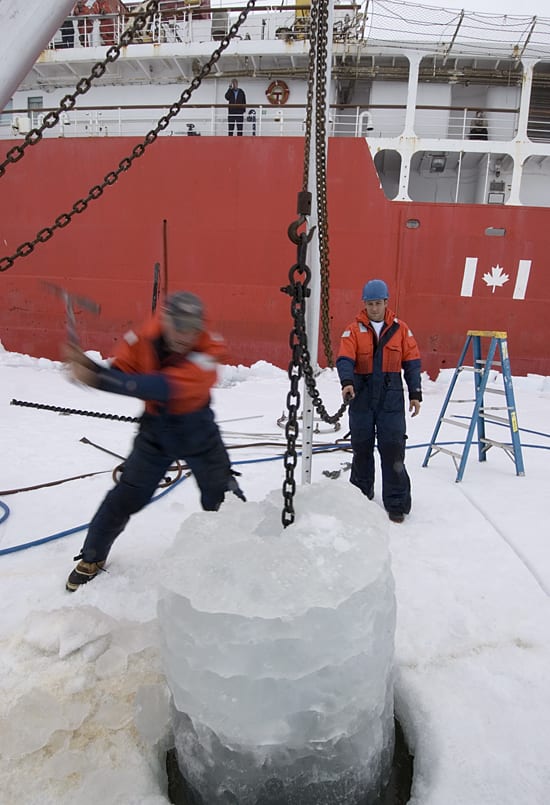Multimedia Items
“Puffs” Fertilize the Sea
While towing a Video Plankton Recorder essentially a microscope-plus-video camera slowly across the Atlantic, (“like driving a lawnmower”), scientists found colonies like these fragile “puffs” were more abundant than previously…
Read MoreHunting for Carbon Dioxide
For weeks WHOI graduate student Naomi Levine and colleagues worked around the clock in the chilly South Atlantic aboard the NOAA research vessel Ronald H. Brown. They took samples of ocean water from many…
Read MoreWell-armed for Life
Researchers found this six-inch squid, called Histioteuthis sp., at about 1,000 meters (3,000 feet), where almost no sunlight penetrates. Adapted to midwater life, it has spots that let it change…
Read MoreClimate Chowder
17,500-year-old shells from a clam found in North Atlantic seafloor sediment helped WHOI geologist Lloyd Keigwin learn about ocean circulation and climate changes. Clams and other shelled organisms incorporate the…
Read MoreIt All Adds Up
WHOI oceanographer Jim Ledwell has been selected as the winner of the2007 Alexander Agassiz Medal, awarded by the U.S. National Academy of Sciences. Ledwell, a senior scientist in the Department of Applied…
Read MoreClimate Seesaw
The severity of wintertime climate over North America and Europe is strongly linked to the most prominent atmospheric pattern in the Northern Hemisphere, a seesaw exchange of air massed called…
Read MoreR/V Knorr
Putting History on Ice
WHOI paleoceanographer Konrad Hughen (left) and WHOI research associate Daniel Montlucon pour liquid nitrogen into sediments retrieved from the seafloor to freeze and preserve them. Sediments accumulate over time in…
Read MoreColor Coding
WHOI scientists Dennis McGillicuddy and Ruoying He created a computer simulation of the historic 2005 toxic algae bloom in New England. Red denotes high algae concentrations; blue the lowest. Algal cells…
Read MoreThe Next Wave
Oceanography is on the verge of a revolution. Instead of sporadic, expeditionary glimpses of the ocean from ships and subs, oceanographers would like to establish a permanent presence in the…
Read MoreDigging Into Pollution Problems
Plaster of Paris casts of the burrows of salt marsh fiddler crabs show how crabs from a healthy marsh (left side) dig straighter and deeper holes than those burrowing into…
Read MoreR/V Atlantis
R/V Atlantis
Rocket’s Red Glare
Fireworks light up the sky above the Pacific Ocean on New Year’s Eve 2006. Actually, the red streak was a flare fired during a safety drill. Crew members on the…
Read MoreCoping Pods
The four major species of copepods in the Beaufort Sea all have different sizes, different life cycles, and different prey. L to R: Metridia longa (~2.5 millimeters), Calanus glacialis (~4mm),…
Read MoreInside Edition
Alvin pilot Mark Spear conducts show-and-tell for new crew members as they sit inside the Alvin submersible, which was housed in its hangar on the research vessel Atlantis for an…
Read MoreAlgae Thermometer
One species of marine alga, Emiliania huxleyi, almost exclusively produces lipids called alkenones, which have proven quite useful for scientists tracking the movement of carbon through the oceans. Alkenones preserved…
Read MoreMission Accomplished
WHOI scientists Christopher German (left), Jian Lin (center), and Dana Yoerger stand in front of the ABE autonomous underwater vehicle on the deck of the Chinese research vessel Dayang 1…
Read MoreBay Watch
The village of Kangiqsujuaq in northern Quebec (population roughly 500) is nestled on a deep bay at the tip of Peninsule D’Ungava off Hudson Strait. The town was a staging…
Read MoreLong Jump
Senior Engineering Assistant John Kemp leaps across a melt pond in the Arctic ice while carrying drill bits for use in deploying an ice-tethered profiler in the Beaufort Sea. This…
Read MoreSome Assembly Required
Engineer Nicole Nichols and MIT/WHOI Joint Program student Chris Murphy take a pause from their work in Hanumant Singh‘s laboratory to pose with two of the group’s projects. Murphy and…
Read MoreA Day to Remember
Ninety-five years ago today, the “unsinkable” Titanic struck an icebergand sank into 12,500 feet (3800 meters) of water in the North Atlantic southeast of Newfoundland. In July 1986, nine months…
Read MoreRising Above It All
WHOI researchers were treated to a spectacular view of 2000 meters of mountain meeting 500 m of sea water in the Comau Fjord of Northern Patagonia (Chile). Marine chemist Laura…
Read MoreBatter Up
WHOI engineering assistants John Kemp (swinging the pickaxe) and Kris Newhall (holding the chain) work to remove a large chunk of ice after it has been pulled out of an…
Read More
